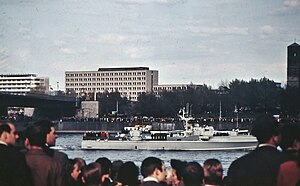
A torpedo boat is a relatively small and fast naval ship designed to carry torpedoes into battle. The first designs were steam-powered craft dedicated to ramming enemy ships with explosive spar torpedoes. Later evolutions launched variants of self-propelled Whitehead torpedoes.

Seeadler Harbor, also known as Port Seeadler, is located on Manus Island, Admiralty Islands, Papua New Guinea and played an important role in World War II. In German, "Seeadler" means sea eagle, pointing to German colonial activity between 1884 and 1919 in that area. The bay was named in 1900 after the German cruiser SMS Seeadler.
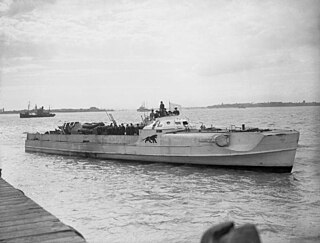
E-boat was the Western Allies' designation for the fast attack craft of the Kriegsmarine during World War II; E-boat could refer to a patrol craft from an armed motorboat to a large Torpedoboot.

The Type 143 Albatros class was a German class of missile bearing fast attack craft. Each vessel is named after a bird of prey including the albatross, condor and cormorant. Constructed by German shipbuilders Lürssen and Kröger, the vessels were intended to replace the Type 141 Seeadler class. The German Navy retired the class in 2005 and sold the boats off to Tunisia and Ghana.

The Type 143A Gepard class was a class of missile bearing fast attack craft and the last one in service with the German Navy before the remaining four operational ships were decommissioned on 16 November 2016. The Ghana Navy operates two such ships.
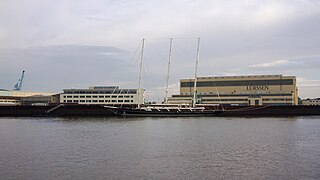
Lürssen is a German shipyard with headquarters in Bremen-Vegesack and shipbuilding facilities in Lemwerder, Berne and Bremen-Fähr-Lobbendorf.

The Type 142 Zobel class was a German class of torpedo bearing fast attack craft. They were in service with the Bundesmarine during the Cold War to protect the Baltic sea coast. The class was designed by Lürssen.
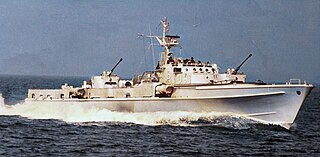
The Type 140 Jaguar-class fast attack craft is an evolution of the German torpedo boats (E-boats) of World War II. The design was developed by Lürssen and designated Schnellboot 55. The 20 boats that were built for the German Navy were in service from 1957 to 1975. Then the Jaguar-class boats were replaced in service with the Bundesmarine by the Tiger class.

The Type 22 missile boat is a ship class in the Chinese People's Liberation Army Navy. The first boat was launched in April 2004 by the Hudong-Zhonghua Shipyard at Shanghai. The boats incorporate stealth features and are based on Australian-designed wave-piercing catamaran hulls that are more stable than other fast missile craft in high sea conditions. 82 of these missile boats are currently in service with three flotillas having been produced over a span of seven years, operating in squadrons of eight vessels each.
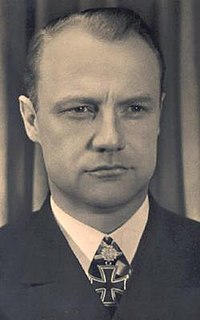
Werner Töniges was a Korvettenkapitän with the Kriegsmarine during World War II. He was also a recipient of the Knight's Cross of the Iron Cross with Oak Leaves. He sailed with the Schnellboot "S 24", "S 26" and "S 102", sinking eighteen ships on 281 combat patrols, for a total of 86,200 gross register tons (GRT) of Allied shipping.
Several naval ships of Germany were named Bussard after the buteo :
The Lürssen effect, used in the design of high-speed boats, is a reduction in wave-making resistance provided by two small rudders mounted on each side of the main rudder and turned outboard. These rudders force the water under the hull outward, lifting the stern, thus reducing drag, and lowering the wake height, which “requires less energy, allowing the vessel to go faster.” The effect was discovered by the German shipbuilding company Lürssen Werft based in Bremen-Vegesack. The Lürssen effect is best remembered for its use during the Second World War in the various classes of German "Schnellboot," or fast torpedo attack boats.
For other ship classes of the same name see Nasty-type patrol boat
